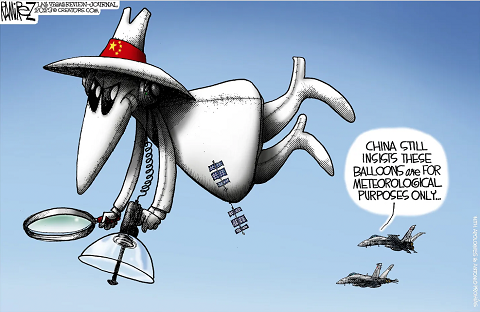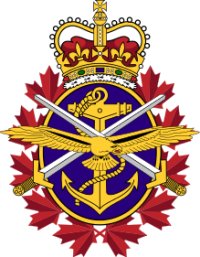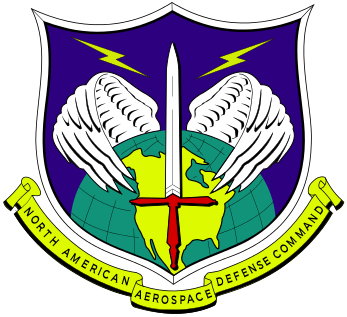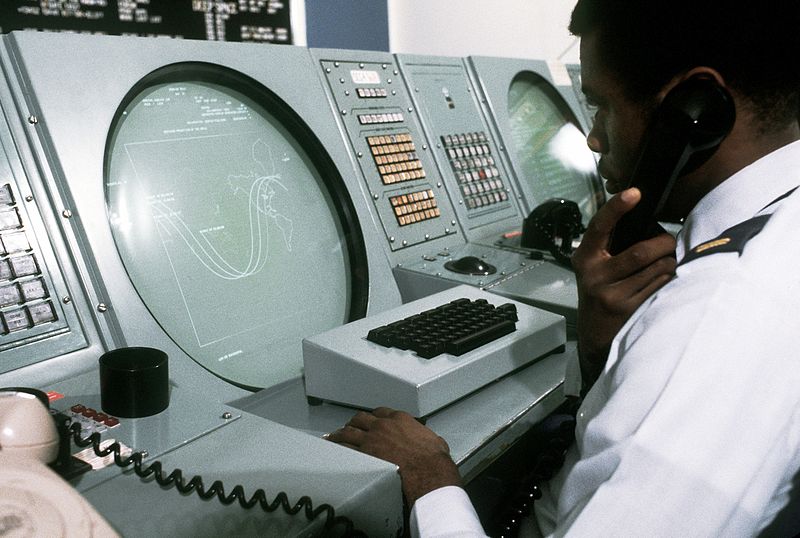Polyus
Published 23 Aug 2021William Tell: an aerial gunnery competition to assess NORAD’s interceptor squadrons. Canadian CF-101s entered 7 of these competitions and won 3 overall “Top Gun” awards as well as one “Top Unit” award. Pretty impressive results when considering how few squadrons Canada fielded as compared with the vast United States Air Force. Results confirmed that the CF-101s on quick reaction alert at bases across the country were indeed useful in their defense.
(more…)
October 3, 2023
The William Tell Aerial Gunnery Competitions; The CF-101 Voodoo in action
July 8, 2023
Canada’s Nuclear-Armed Cold War Interceptor: the story of the McDonnell CF-101 Voodoo
Polyus
Published 14 Aug 2020When Soviet or unidentified aircraft approached Canadian airspace in the 1960s and 70s, they were met by an iconic cold war interceptor. Armed with both conventional and nuclear weapons, they were a formidable foe in their day. It served to support NORAD and protect the Northern approaches into the North American heartland during the height of the Cold War. Although it was neither designed nor built in Canada, the reliable Voodoo remains a Canadian Cold War icon and was well loved by its ground crews and pilots.
0:00 Introduction
0:29 McDonnell F-101A development
1:06 F-101B Interceptor
3:11 Canada becomes involved with the Voodoo
4:15 The Nuclear question
5:08 Comparison with contemporaries
5:36 Operational History
8:04 Legacy and Retirement
8:48 Conclusion
(more…)
February 13, 2023
It’s open season for balloons over North America
In The Line, yet another incursion into NORAD air space, and no, this isn’t a re-post from last week:
Holy jumpin’ Jeepers, folks, we’ve got more balloons!
On Friday, the Americans shot down another unidentified flying object — gulp — off the coast of Alaska. By Saturday, NORAD was reporting yet another one, this time over Canadian territory. NORAD jets scrambled, and an American F-22 destroyed the object over Yukon. Canadian military teams are now en route to recover the wreck and find out what the hell we are shooting at.
This was an exciting enough little pick-me-up on Saturday, but it wasn’t done. Later that night, another air defence emergency was declared over Montana, and American F-15 jets were scrambled out of Oregon to intercept an object that had been detected on radar. They were not able to find anything, and as of press time, NORAD has said only that they will continue to monitor the situation.
A few points we’d make about a truly bizarre series of stories.
The first is that there’s nothing wrong or particularly embarrassing about an American plane defending Canadian air space. NORAD is a joint bi-national command. Missions are tasked to the first available aircraft. That might sometimes mean a Canadian jet defending U.S. territory. It’s happened! On Saturday, the object was closer to American bases in Alaska than the nearest CF-18 base in Alberta. There probably is a conversation worth having about whether Canada should maintain a small alert force of jets further north, better able to respond in the future. That’s expensive and logistically complicated, but may still be worth considering. For now, the system functioned as intended. So we say, quite sincerely, thanks, America. We appreciate the help.
That being said, we do think this is a useful reminder that the long and repeated delays by Canada to both replace the aging CF-18 jets and modernize NORAD with new sensors and capabilities were reckless and dumb. It was obvious that the CF-18s needed replacing when Stephen Harper took office, but we only got that underway in recent months. NORAD, for its part, functions well as an institution but needs upgraded technology. That project also should have begun many years ago. In both cases, we delayed because we didn’t want to spend the money and because defence projects in this country are almost always politically fraught. The Russian invasion of Ukraine and now the weird series of aerial intruders is a useful reminder that neglecting your own defences is never a good idea. We are realists about Canada’s ability to field a massive military, but our geography, in so many ways a blessing, does impose a few costs back on us. It’s not easy to patrol and police such massive territories, especially with a relatively small and concentrated population. But we have to do it. It’s what being a country means. Too often, we haven’t. We hope that changes. With the NORAD modernization announced and the F-35s ordered, perhaps we’re finally making right some of these failures. We hope so. But we are jaded, friends. We admit that.
Our final point is an appeal to calm. We don’t really know what the hell is happening with all these aerial intruders either, but there could easily be a pretty mundane explanation. Radar sets have programmable software filters that are intended to avoid cluttering up the scopes with too much information. Without these filters, clouds, snow storms and birds can cause returns that may look like planes and missiles. One way of filtering out such clutter is by establishing a minimum speed for flagging an object. Balloons are likely normally below that minimum. Your Line editors suspect that part of what is happening right now is that we’ve adjusted those filters, and are suddenly seeing things that were already there all along.
Is that better, or worse? We don’t know. We can make that argument either way. In any case, that may be what’s happening.
Or hell, maybe it’s aliens, and Canada and the U.S. just declared war on a more sophisticated race that travelled across the vastness of the stars only to end their journey by being murdered by Justin Trudeau and Joe Biden. We doubt it, to be honest. But it’s been a weird few years already, no?
October 29, 2022
The Canadian government, despite committing billions to replace old equipment, is still not serious about the Canadian Armed Forces
In The Line, Matt Gurney explains why — despite big-ticket items getting a few headlines — the Canadian Armed Forces need far more than what any government has been willing to provide since the start of the Cold War:
Objectively speaking, there has been progress. Canada has committed billions to replacing the CF-18 fighter jets with F-35s — 88 of them. (That’s still way too small an air fleet for a country our literal size — it’s not a lot of planes for such a big place, folks — but it’s something.) Billions more have been committed to modernizing NORAD’s early warning systems. And, miracle of miracles, we finally got around to replacing the goddamned Second World War-era pistols!
These are real, tangible things. These things matter. They will leave the Canadian Armed Forces better off, our soldiers better protected and our continent more secure. This is good news.
It’s also the bare minimum.
Even these big spending announcements, and even the itty bitty pistol one, don’t actually add capabilities to the Canadian military. They replace existing ones. They maintain our capabilities. Sure, we can quibble about “maintain” or “replace” — the F-35 will give Canada a stealth capacity it has never had before, and all that jazz. Fine. Fair. But it isn’t really adding to the overall list of missions we are capable of conducting. It’s fleshing out capabilities that, due to advanced age and wear-and-tear for our critical equipment, were starting to exist only on paper. The government deserves credit for this, but only a really small amount of credit. Getting the urgently necessary basics done, many years after they should have been handled, is good, but it’s not worth a pat on the back. It is the bare minimum the country deserved and that the military needed to function, so that’s how far I’ll go in my praise: congratulations, Liberals, on responding to a massive change in our geopolitical order by accomplishing the bare minimum that was already overdue.
If that sounds scathing, here’s the worst part: that’s me being sincere. Thanks for the bare minimum! I wasn’t sure we’d get even that
So yeah. Good, but … you see the problem here, no? In a new era of global instability and geopolitical turmoil, the Canadian response, thus far, has been to get caught up to where we should have been 10 years ago. At the latest. And it’s far from clear that, if not for Russia kicking off the largest conflict we’ve seen in Europe since 1945, we’d have even bothered to do these necessary, long-overdue things.
And this is all shaping up to be just the latest iteration of a little game both Liberals and Conservatives like to play with the Canadian Armed Forces (and, come to think of it, most policy files). They’ll point to specific investments or particular accomplishments when defending their record. And the investment and accomplishment may well be excellent indeed! But they won’t speak to the full, broader picture. And the full, broader picture of the Canadian Armed Forces is grim, and some new F-35s and 9mm pistols isn’t going to change that.
There was a little story last month you might have seen. After Hurricane Fiona wrecked big parts of several Atlantic provinces, the feds sent in the military. This is right and proper. The troops would have made a welcome sight in those communities, of course. What you might not have noticed, though, was that Nova Scotia had to go public with its desire for more troops. It asked for a thousand. It got 500. It kept asking for more. It got the 500. And most of those 500 were troops already stationed in Nova Scotia; only about 200 were actually sent in from elsewhere. The government never really commented on this, but it’s not hard to suss out the problem: the military couldn’t scrape together any more troops.
October 11, 2022
A tribute to the F-101 ‘Voodoo’ Fighter
Matsimus
Published 4 Jun 2022The McDonnell F-101 Voodoo is a supersonic jet fighter which served the United States Air Force (USAF) and the Royal Canadian Air Force (RCAF).
Initially designed by McDonnell Aircraft Corporation as a long-range bomber escort (known as a penetration fighter) for the USAF’s Strategic Air Command (SAC), the Voodoo was instead developed as a nuclear-armed fighter-bomber for the USAF’s Tactical Air Command (TAC), and as a photo reconnaissance aircraft based on the same airframe. An F-101A set a number of world speed records for jet-powered aircraft, including fastest airspeed, attaining 1,207.6 miles (1,943.4 km) per hour on 12 December 1957.[1] They operated in the reconnaissance role until 1979.
Delays in the 1954 interceptor project led to demands for an interim interceptor aircraft design, a role that was eventually won by the B model of the Voodoo. This required extensive modifications to add a large radar to the nose of the aircraft, a second crew member to operate it, and a new weapons bay using a rotating door that kept its four AIM-4 Falcon missiles or two AIR-2 Genie rockets hidden within the airframe until it was time to be fired. The F-101B entered service with USAF Air Defense Command in 1959 and the Royal Canadian Air Force in 1961. US examples were handed off to the USAF Air National Guard where they served until 1982. Canadian examples remained in service until 1984.
(more…)
September 9, 2022
The Velvet Glove and Sparrow II missiles; A Beginners Guide To Post-War Bomber Interception Tactics
Polyus Studios
Published 14 Jul 2018The Velvet Glove was a semi-active guided missile system developed by the Canadian Armament Research and Development Establishment. Its successor, the Sparrow II, was developed by Canadair in association with the US Air Force. This is the story of the development of the missiles in the context of contemporary weapons systems.
(more…)
June 27, 2022
It’s not clear where the money will come from to fund the recently announced NORAD upgrades
Aside from sticking knives in the backs of political critics, Justin Trudeau’s government loves announcing new programs and additional spending more than anything else. The boring, workaday details like actually implementing the newly announced programs … well, that sometimes gets forgotten in the rush to make new announcements. In this case, the recent announcement that Canada will be spending Cdn$4.9 billion to upgrade our contribution to NORAD for continental defence — and to no real surprise for anyone who’s been paying attention — it’s not clear even to the head of the Canadian Armed Forces just where that money is actually supposed to come from:
Canada’s defence chief says he doesn’t yet know where the money is coming from for $4.9 billion in promised upgrades to NORAD radar and surveillance systems.
In an interview with The West Block‘s Mercedes Stephenson, Gen. Wayne Eyre was asked about growing questions facing the government to detail their spending plan on NORAD upgrades.
Sources have told Global News the military is uncertain about where the funds are coming from, and that there are meetings happening at the department trying to determine how much of the money is new. Those sources say there are significant concerns that the money may not be new, and may need to be re-capitalized from within the existing defence budget.
“I haven’t completely figured out myself the source of funds for this,” Eyre said.
“So I can’t say definitively where it’s coming from. I will say, though, the announcement was welcome.”
Eyre was also asked whether the military is planning any departmental cuts in order to be able to allocate $4.9 billion to the NORAD upgrades.
“We haven’t looked at cutting. But as always, we have to look at rebalancing,” he said.
“The force that we have today is not the force that we need to support tomorrow. So we need to look at force structure. Do we have it in the right place? Do we need to look at rerolling of units so that they undertake roles that are more relevant for the future security environment? That is all important.”
Global News has asked for clarity on the question to Defence Minister Anita Anand’s office.
No answer has yet been received.
August 6, 2021
Avro Canada CF-100 Canuck: Canada’s only domestically produced all-weather interceptor
Polyus Studios
Published 3 Oct 2017Support me on Patreon – https://www.patreon.com/polyusstudios
**I realize a few of you are having trouble with the way I talk and how I’ve done the sound mixing. Please note that this was my first video and I tried to get everything right as I learned to do it. That said, I obviously made some mistakes. I am just one guy making these things and I’m learning as I go. Feel free to check out my more recent videos where I have tried to correct the sound issues.**
The CF-100 is Canada’s only domestically designed jet fighter to reach service and to be built directly to RCAF specifications. In its day it was a competitive all-weather interceptor. The Canuck protected Canadian airspace from the threat of nuclear armed Soviet bombers for over a decade. This is the story of its development and deployment.
Aircraft mentioned:
Vampire F.3
CL-13 Sabre
CF-100 Canuck
CF-101 Voodoo
CF-105 ArrowResearch sources:
http://www.cmp-cpm.forces.gc.ca/dhh-d…
https://www.bombercommandmuseum.ca/aircraft/cf-100/
http://www.canadianflight.org/content/avro-canada-cf-100-canuck
http://www.avroland.ca/al-cf100.html
http://www.aviastar.org/air/canada/canada_canuck.php
http://www.rwrwalker.ca/caf_canucks.html
http://image-bank.techno-science.ca/d…
NORAD and the Soviet Nuclear Threat: Canada’s Secret Electronic Air War By Gordon A.A. Wilson0:00 Introduction
1:08 Initial Development
2:38 CF-100 Mk 1 and Mk 2
4:26 CF-100 Mk 3
6:51 CF-103 and Transonic Speeds
7:36 CF-100 Mk 4
11:33 CF-100 Mk 5
13:14 Velvet Glove and Future Proposals
14:28 Operational History
20:02 Conclusion#CF100 #CanadianAerospace #PolyusStudios
January 30, 2020
Upgrading NORAD’s capabilities with AN/SPY-7(V)1 radar (aka “Aegis Ashore”)
Ted Campbell on the need to upgrade NORAD radar installations as part of a general refurbishment of the alliance’s capabilities:
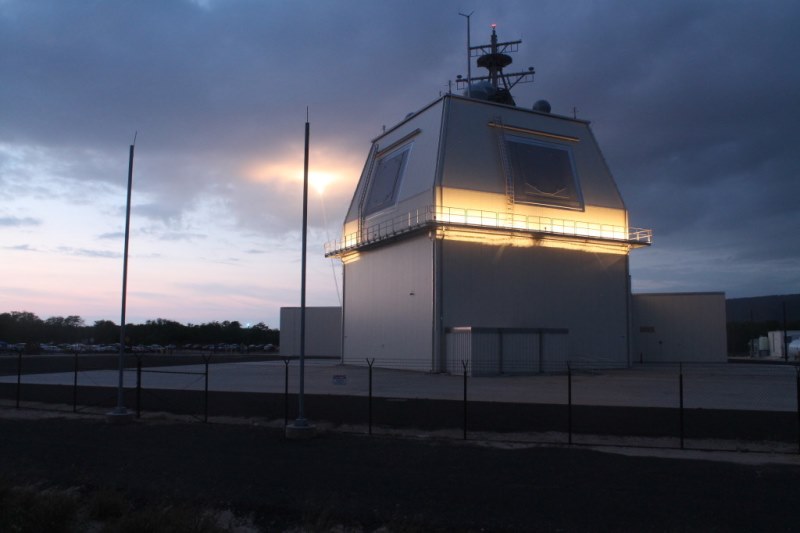
Lockheed Martin’s Solid State Radar has been designated as AN/SPY-7(V)1 by the US government.
Image from Lockheed Martin/PRNewsfoto.
One of the elements which might be considered in modernizing and enhancing the North American Aerospace Defence Command (NORAD) surveillance, warning and control system is a new radar and some people have suggested that the AN/SPY-7(V)1 radar, sometimes called Aegis Ashore, might be a useful (and proven, it is in use, on land, in Japan, and will be fitted on Canada’s new Type 26 (destroyer-frigate) combat ships) solution. This radar is eminently suitable to be part of an enhanced (conventional) NORAD and of a CANUS continental ballistic missile defence system.
There are many technical (and logistical) advantages to using that radar on both our, Canadian, warships and in a land-based role, too.
The AN/SPY-7(V)1 radar produces a lot more information than do the current AN/FPS-117 and AN/FPS-124 radars which are used in the NORAD role, today, and were built in the 1980s using 1960s and ’70s technology.
(Please don’t worry about the AN/*** designations. They are part of a very sensible American system which was designed to make it simpler to identify both Army and Navy systems (hence the AN/ at the beginning). The three letters following the AN/ describe the system:
- The first letter describes the installation. F means Fixed, on the ground (land) and S means on a ship;
- The second letter means the type of equipment, and P means radar; and
- The third letter means purpose. S means search (detection and locating) and Y surveillance and control.
Thus the SPY-7 is a shipborne surveillance radar and the FPS-117 is fixed (land-based) search radar. The numbers just differentiate one system from another.)
If Canada chooses an advanced radar, like the SPY-7, two engineering problems will need to be addressed:
- First, these things use a lot more power than do the existing radars; and
- Second, they produce much, much more information which needs to be “transported” instantly, to control centres in places like Canadian Forces Base North Bay, where all the data from all the radars is analyzed and used to effect NORAD’s mission. If the radar sites are located below (about) 72°N, as would be the case for coastal radars in BC, NS and NL, this is not a huge problem because the station is within the “footprint” of the big, high bandwidth satellites in geostationary orbit. But if the radar site is too far North then a terrestrial (possibly microwave, maybe tropospheric scatter) network (in which each station needs electrical power, too) will have to be installed to move the data to a satellite ground station. (Or a non-geostationary, high bandwidth, satellite system will have to be deployed.)
January 24, 2020
From a Canadian perspective, “NORAD … is more important than NATO”
The American government has once again expressed a strong desire to update the 1957 North American Air Defence Commmand arrangement between the US and Canada for defence of the North American continent. It’s a Cold War relic to some (particularly some in the Prime Minister’s Office and cabinet), but it has a very real value to Canada, as Ted Campbell explains:
In 1957 Canada and the USA agreed to create the North American Air Defense Command. It is a “combined” command, American and Canadian people, civilian and military, work together, in combined headquarters, to conduct an active aerospace defence effort over the continent we share. Americans and Canadians work side-by-side managing the airspace, detecting intruders and identifying and intercepting them and so on.
NORAD, I would argue, is more important than NATO.
First, it is about defending our own homeland.
Second, it is about defending the US strategic deterrent, which has, arguably, done more to keep global peace than all the efforts of the United Nations, combined.
NORAD modernization and expansion should be at the top of Canada’s defence policy agenda. Specifically:
- First, billions of dollars, likely tens of billions of dollars are going to be needed to upgrade the surveillance and warning system. We need new radars, terrestrial and space-based, and upgraded control systems to do the job properly;
- Second, Canada needs to buy enough (85+ is just the very barest of bare minimums) of the right new fighter jet; and
- Third, Canada needs to join the American ballistic missile defence system.
I believe that this issue: the shared defence of our, shared, continent and, therefore, the defence of the American heartland and of America’s strategic deterrent is a key, perhaps even the key element in our most important foreign relationship. […] The knowledge that Canada is doing a full and fair share of defending our shared continent, of defending America, is not lost on admirals and generals, diplomats and senior civil servants, representatives and senators in the US Congress, pundits and political leaders in waiting in the think-tanks and senior staff in the White House, even if Donald J Trump is not impressed … IF we are doing a full and fair share.
Right now, we are not.

